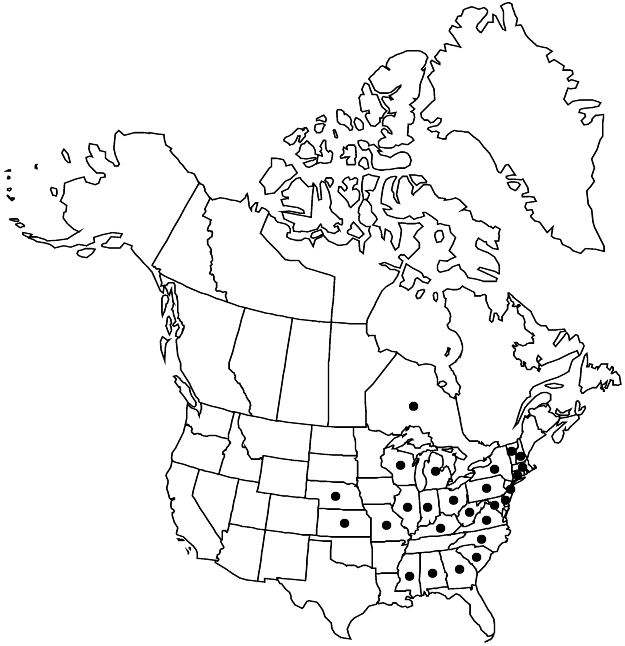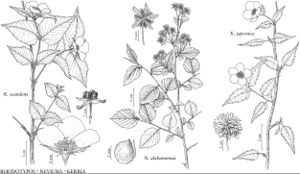Difference between revisions of "Rhodotypos scandens"
Bot. Mag. (Tokyo) 27: 126. 1913.
FNA>Volume Importer |
FNA>Volume Importer |
(No difference)
| |
Revision as of 23:12, 16 December 2019
Stems reddish brown. Leaves: stipules 2–3.5 mm, membranous, margins strongly sericeous; petiole 3–10 mm; blade weakly bicolored, narrowly to broadly ovate, 4.5–7.5(–10) × 2–4(–6.5) cm, base rounded to broadly cuneate, plicate between impressed veins, apex acuminate, abaxial surface more strongly sericeous, hairs 0.1–0.2 mm. Pedicels 6–13 mm (to 30 mm and expanding in fruit). Flowers: epicalyx bractlets linear-lanceolate, leafy, 2.5–5 × 1 mm; sepals 8–15(–18) mm, thickened basally, distally leafy, fimbriate-serrate, acuminate, sericeous-strigose; petals spreading, 17–22 mm, margins entire-erose; stamens in several series mostly at sepal bases, rarely onto torus, filaments white, 4–6 mm, anthers yellow, 0.5–0.7 mm; torus 2–2.5 mm, interior densely sericeous-strigose, exterior glabrous; styles linear. 2n = 18.
Phenology: Flowering Apr–May; fruiting Jun–Sep.
Habitat: Mesic disturbed woods and thickets, especially in suburban areas
Elevation: 0–300 m
Distribution

Ont., Ala., Conn., Del., D.C., Ga., Ill., Ind., Kans., Ky., Mass., Mich., Miss., Mo., Nebr., N.H., N.J., N.Y., N.C., Ohio, Pa., S.C., Vt., Va., W.Va., Wis., Asia (China, Japan, Korea).
Discussion
Rhodotypos scandens is expected elsewhere in North America. It is widely cultivated in Japan and infrequently in North America and Europe.
Selected References
None.
